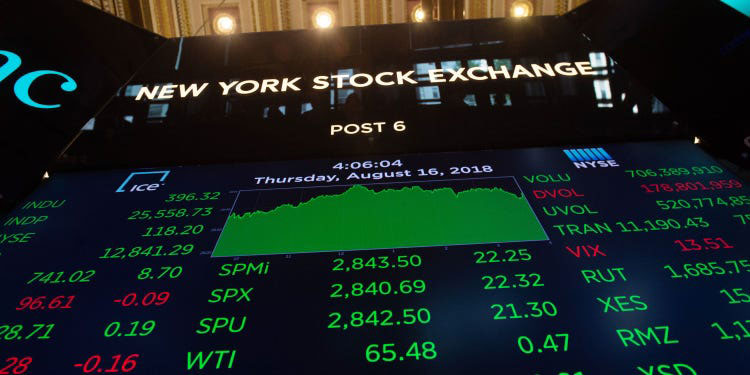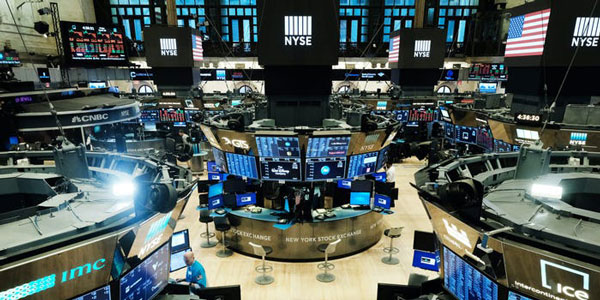The words "big-cap" and "small-cap" convey the market capitalization value of the companies they refer to. A larger company's stock is called a big-cap stock, but the terms can be used interchangeably. In contrast, small-cap stocks are those belonging to smaller corporations.
Labels like this may mislead investors into thinking that investing primarily in large-cap firms would provide profits. That's a far cry from reality, especially in today's world. To get the most out of your investments, you need to understand how substantial small-cap stocks have grown.
Small-Cap vs Large-Cap Stocks

Expansion of Stocks
Let's define the term "cap," which is short for capitalization. However, the full name of the concept is "market capitalization" (short for "market capitalization"). The total monetary worth of a company's outstanding shares, as estimated by the market.
To reach this value, you need to multiply the stock's price by the number of shares in circulation. It's essential to bear in mind that while this is the most popular definition of market capitalization, you need to add the market value of any publicly-traded bonds to compute the overall market value of a firm.
The Big Men
General Electric and Walmart are examples of extensive cap stocks, publicly listed corporations with more than $10 billion in market capitalization. They are also known as blue-chip stocks because they are well-established corporations with a track record of reliable earnings, an excellent public image, and financials. Although these firms often do well and give investors secure returns, this doesn't apply to all large caps.
Because of their worth, some investors believe that large-cap equities are less risky than smaller ones. Financial history is littered with examples to the contrary—Enron is only one. It provides a visual representation of how difficult it is to fall from a more significant height.
Rating Headgear
Brokerage firms' large and small-cap stocks classifications vary somewhat and have evolved. Companies on the periphery of the brokerage definitions are only affected by minor variances in terminology. For mutual funds to make investment decisions, these definitions are critical for borderline enterprises.
These subcategories have grown in tandem with the market indices throughout the years. It's also worth noting that these aren't hard-and-fast rules but rather guidelines that are subject to change. Many people consider stocks with more than $100 billion to be mega caps.
Changing the Counts
Wall Street's attention is focused on large-cap stocks since that's where the lucrative investment banking sector is located. In the US equities market, large-cap stocks make up the majority. Hence they form the foundation of many investors' portfolios.
On the other hand, mega-cap stocks are more likely to fluctuate in terms of volume. Due to the 2008 mortgage crash and the Great Recession, just five of these stocks were left in existence in 2010.
Mega-cap companies have seen a revival in 2017 and 2018, with behemoths like Apple (AAPL) reaching record market capitalization highs. There is no data on the total number of mega-cap stocks that will be traded in 2019.
Stocks of Small and Large Cap Companies: An Overview

Market capitalization has historically had an inverse or opposing connection to both risk and return, defined as the value of a firm's outstanding shares. Corporations with a market capitalization of $10 billion or more tend to expand more slowly than those with a smaller market capitalization. Between $2 and $10 billion in capitalization, a company is considered midcap, and between $300 million and $2 billion is considered tiny.
The borders between large- and small-cap stocks have evolved throughout time and varied slightly between brokerage firms. There are just a handful of firms affected by the different definitions.
Differential Characteristics
Liquidity and research coverage benefit large-cap stocks more than smaller ones. It's easy for investors to analyze corporate financials, independent research, and market data for large-cap offers because these offerings have a significant following.
Concerning market efficiency, large caps tend to trade at more reflective prices of the underlying firm, and they also trade more frequently than smaller companies. Investing in small-size stocks is more volatile and risky. Small-cap companies, on the whole, have fewer financial resources than their larger counterparts.
Because of this, it is more difficult for smaller businesses to secure the funding they require to fill up the gaps in their cash flow, fund new market expansion efforts, or make substantial capital investments. During economic downturns, small-cap enterprises are especially vulnerable to this issue.
Example
Although this is not a new phenomenon, late 2018 saw a spike in volatility for small-cap stocks. As of September 2018, the Russell 2000 index was up 13.4% compared to the S&P 500's 8.5% gain in the first three quarters of 2018.
Numbers 1 and 2 In the face of rising interest rates, small caps averaged yearly growth of 11.24 percent between 1980 and 2015, substantially surpassing midcaps at 8.59 percent and big caps at 8.00 percent. " 3 The Russell 2000 outperformed the S&P 500 by 7 percent in the first few weeks of 2019, compared to 3.7 percent for the S&P 500.

Are There Tax-Exempt Mutual Funds Available?

12 Money Personality Types: Which One Are You?

See How Investing With LEAPS Could Generate Huge Returns

A Comprehensive Analysis of The Mastercard Credit Card On eBay

Best Affordable Health Insurance Companies

SMEM vs. SD: The Difference

How Can One Avoid Losing Money in Forex Via The Trading Of Currencies?

What You Need to Know About Medicare Part A in 2022

All about the Disposable Income

Getting a Down Payment for a House in an Unusual Way

Commercial Real Estate Loans: Everything You Need to Know
